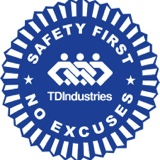Information
-
Document Title
-
Conducted on
-
Headcount
1. General Safety and Health
-
1.1 PTSP documented and signed?
-
1.1.1 Reviewed every morning?
-
1.1.2 Adequate literature for task, hazards, action plan?
-
1.2 Daily stretch and flex?
-
1.3 Plan for emergency evacuation?
-
1.4 Knowledge of how to get first aid, emergency equipment, etc.?
-
1.5 Potable water provided?
-
1.6 Adequate number of trash containers?
-
1.7 Housekeeping/Slip, Trip, or Fall Hazards?
-
1.8 Material stored properly?
2. Personal Protective Equipment
-
2.1 Hard Hat
-
2.2 Eye/Face Protection
-
2.3 Hand Protection (Task Specific)<br>
-
2.4 Proper Footwear? (Steel toe boots, metatarsal guards, etc.)
-
2.5 Clothing?
3. Electrical Safety
-
3.1 GFCI in use?
-
3.2 Extension/Power cords in good condition with ground prong?
-
3.3 Work area lightning sufficient?
4. Fall Protection
-
4.1 Guardrails adequate?
-
4.2 Holes marked and covered?<br>
-
4.3 Anchor points approved?
-
4.4 PFAS used and in good condition?
-
4.5 PFAS inspected?
5. Heavy Equipment
-
5.1 User/Operator trained and certified (if applicable)?
-
5.2 Duct Jacks in good condition and inspected?
-
5.3 Roust-a-Bouts in good condition and inspected?
-
5.4 100% tied off in scissor lifts?
-
5.5 All heavy equipment in good condition and inspected? (Scissor lifts, forklifts, etc.)
6. Ladders
-
6.1 Ladder in good condition?
-
6.2 Is the ladder positioned correctly and secured?
-
6.3 Is the annual ladder inspection up to date?
-
6.4 Is the ladder suitable for the job? (e.g. metal ladder used for electrical work)
-
6.5 Using the ladder correctly? (3 point contact, facing ladder, below top 2 steps, etc.)
7. Hand and Power Tools
-
7.1 Guards in place?
-
7.2 In good condition?
-
7.3 Used for intended purpose?
-
7.4 Adequate tools to perform work in area?
-
7.5 Inspected daily?
8. Chemical Labeling and Storage
-
8.1 Unsafe storage location? (e.g. flammables near ignition sources)
-
8.2 Incompatible chemicals stored near each other?
-
8.3 Adequate spill containment equipment?
-
8.4 Safety Data Sheets accessible on site?
-
8.5 Familiarity with emergency procedure for chemicals used?
-
8.6 Excessive quantities stored on site or in vehicles?
-
8.7 Ventilation sufficient?
-
8.9 Chemicals stored in approved containers with legible label?
9. Hot Work
-
9.1 Fire Extinguisher near hot work? (inspected and up to date)
-
9.2 Compressed Gas Cylinders stored properly? (Valve cap, upright, secured, etc.)
-
9.3 Hot Work equipment (Cylinder, Gauges, Valves, Hoses, Etc.) in good condition?
10. Confined Space
-
10.1 Permit/Non-Permit Space?
-
10.2 Space Evaluated and Air Quality Tested?<br>
-
10.3 Rescue Equipment / Trained Personnel? (Non-Entry Rescue)
11. Excavation Safety
-
11.1 Soil Tested and Classified?
-
11.2 Ladders in place for Entry and Egress?
-
11.3 Benching/ Shoring in Place?
-
11.4 Competent Person on Site?
12. Crane Safety
-
12.1 Crane Paper Work in Place?
-
12.2 Competent Person on Site?
-
12.3 Rigger, Signaler, Operator are qualified/certified?
-
12.4 Rigging Equipment Inspected?
Sign Off
-
Enter any corrective actions that will be undertaken
-
Auditor's signature
-
On site representative






